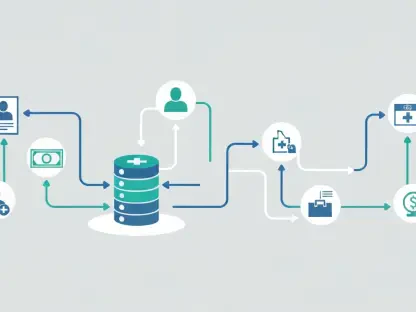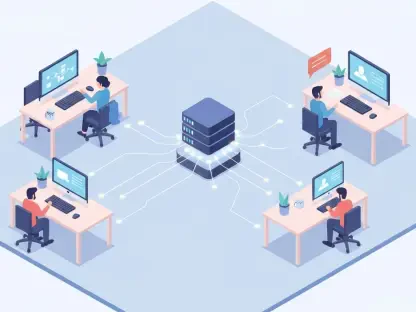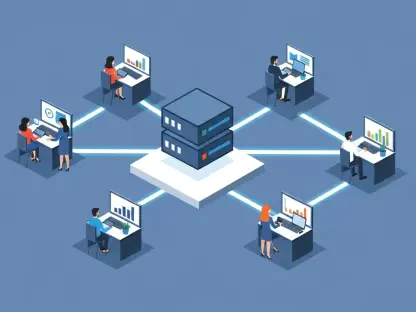In the ever-evolving landscape of cybersecurity, the case of StormBamboo provides a sobering reminder of the vulnerabilities inherent in non-encrypted network communications. This Chinese hacker group, also known as StormCloud or Evasive Panda, recently orchestrated a significant breach compromising an ISP and several macOS and Windows devices. Through this incident, several critical themes have emerged, shedding light on the complex and multifaceted nature of modern cybersecurity challenges.
The Dangers of Non-Encrypted Communications
Exploiting HTTP over HTTPS
StormBamboo’s operation exploited the fundamental vulnerability arising from the use of HTTP instead of HTTPS. HTTP, while functional, lacks the encryption necessary to protect data transmitted over the network. By exploiting this weakness, StormBamboo manipulated DNS query responses, injecting malicious payloads into the data stream. This breach has underscored the critical need for encryption in safeguarding data integrity and thwarting unauthorized access. Ensuring that network communications are encrypted can significantly elevate the security posture of any digital infrastructure, making it considerably more challenging for malicious actors to intercept and manipulate data.The usage of HTTP over HTTPS created an entry point for StormBamboo to poison DNS responses, allowing them to covertly reroute traffic. This tactic enabled them to alter automatic software updates seamlessly. Given the seamless integration of internet service providers in daily operations, this manipulation would likely go unnoticed by users. The inherent insecurity of non-encrypted communications thus served as a vector for a comprehensive network compromise. Through mechanisms like this, the hackers installed malign software such as MACMA on macOS systems and a malicious Google Chrome extension named RELOADEXT. Such incidents highlight a significant cybersecurity paradigm: the transition to HTTPS and other encrypted protocols is not merely a best practice but an indispensable measure.
DNS Query Manipulation
Manipulating DNS query responses allowed StormBamboo to alter automatic software updates covertly. This tactic involved redirecting legitimate traffic to malicious servers, enabling the installation of malign software such as MACMA and malicious Chrome extensions like RELOADEXT. By poisoning the DNS responses, they effectively rerouted requests meant for legitimate update servers to their own malicious servers. Once control was established, it became possible to push unauthorized software into machines, bypassing traditional defenses that rely on recognizing known threats.This approach exemplifies how each layer of network communication, no matter how seemingly insignificant, can serve as a potential attack vector. The inherent insecurity of non-encrypted communications thus served as a vector for a comprehensive network compromise, illustrating that strong encryption is paramount in modern cybersecurity defenses. Strong encryption helps secure the communication channels, making it more difficult for attackers to manipulate data flow without detection. Hence, the consequences of ignoring encryption are not just potential breaches but systemic vulnerabilities that can be exploited comprehensively and effectively.
Vulnerabilities in Automated Processes
Risks in Automatic Software Updates
Automation in software updates is designed to streamline and secure the process by delivering the latest patches and features without manual intervention. However, the convenience brought by this automation can also introduce significant security vulnerabilities if not properly safeguarded. In the case of StormBamboo, the group hijacked automated update mechanisms to deliver malware, exploiting the trust users have in these unattended processes. When these automated, often unsupervised, updates are compromised, the malicious actors can distribute harmful software without immediate detection from users or system administrators.The automated processes that are supposed to enhance security by ensuring timely patches and updates turn into vectors for malware distribution. This demonstrates the necessity of multi-layered security measures to protect automated systems from being weaponized. Attackers exploited this by injecting malicious payloads during update communications, allowing them to deliver harmful extensions and applications under the guise of legitimate updates. The breaches caused by these manipulations point to the importance of strengthening and continuously monitoring automated systems to ensure they remain protected against advanced threats.
Security Protocols for Automation
To mitigate risks associated with automated updates, implementing rigorous security protocols is essential. This includes encryption of update channels, multi-factor authentication, and continuous monitoring to detect anomalies. These protocols should ensure that automated updates are both secure and authenticated, making them less susceptible to hijacking or manipulation. Utilizing encrypted channels for updates and incorporating multiple validation steps can significantly diminish the risk of unauthorized updates seeping into the network infrastructure.StormBamboo’s infiltration highlighted the consequences of neglecting such measures, which could compromise entire networks by exploiting automated systems. Strong security protocols, such as those involving public-key infrastructure (PKI) for verifying update sources, can make a substantial difference in maintaining the integrity of these processes. Only through robust and vigilant security practices can the double-edged sword of automation be managed effectively. Regular audits, penetration tests, and real-time anomaly detection are additional strategies that can enhance the security of automated processes, ensuring that these systems offer the intended benefits without exposing critical vulnerabilities.
The Criticality of Securing Infrastructure
Role of ISPs in Network Security
Internet Service Providers (ISPs) play a pivotal, yet often understated role in the cybersecurity ecosystem. The breach orchestrated by StormBamboo underscores how ISPs, if compromised, can serve as gateways for further intrusions into downstream networks. As gatekeepers of internet traffic, ISPs have the critical responsibility of ensuring secure data transmission, making their security paramount for the broader cybersecurity framework. When an ISP’s infrastructure is compromised, the ripple effects can be far-reaching, affecting numerous downstream networks and devices.Ensuring the security of ISPs is thus foundational for protecting the broader network infrastructure from potential cyber threats. This involves deploying advanced threat detection systems, ensuring stringent compliance with cybersecurity standards, and conducting regular assessments and penetration tests to identify and remediate vulnerabilities. A compromised ISP serves as a strategic beachhead for attackers, offering them expansive access points into individual and organizational networks. By fortifying ISPs against such threats, the entire ecosystem stands to benefit from increased security and resilience against sophisticated cyber-attacks.
Strategic Breaches and Downstream Impacts
By compromising an ISP, StormBamboo gained a strategic foothold, bypassing individual defenses and enabling subsequent attacks on connected devices. This method of altering DNS responses at the ISP level effectively rendered traditional security solutions ineffective. Attacks on ISPs enable attackers to manipulate data flow at a fundamental level, making it exceedingly difficult for downstream systems to recognize and respond to the intrusion. By controlling a central lens through which data moves, attackers can orchestrate sophisticated, wide-reaching attacks.Securing ISPs against such strategic breaches requires advanced threat detection systems, regular penetration testing, and adherence to strict cybersecurity standards, ensuring they remain robust against sophisticated attacks. These measures can significantly reduce the risk of systemic vulnerabilities being exploited by attackers. It is imperative to consider ISPs not just as facilitators but as integral components of the network security apparatus. Through regular monitoring and advanced defensive measures, ISPs can better protect themselves and their clients from becoming part of a broader, coordinated cyber-attack strategy.
Ingenuity of Modern Cyber Attackers
Advanced Tactics Beyond Traditional Methods
The sophisticated nature of StormBamboo’s attack reflects the evolving ingenuity of modern cyber attackers. Rather than relying on conventional methods like firewall breaches or phishing, StormBamboo employed advanced techniques that exploited underemphasized vulnerabilities. This included targeting ISPs and utilizing malicious browser extensions to exfiltrate encrypted data, showcasing the need for adaptable and dynamic defense strategies that go beyond static perimeters. Modern cyber-attacks increasingly leverage complex multi-vector approaches that are harder to detect and counteract, reflecting the need for advanced, responsive security postures.Attackers today are leveraging complex tactics such as manipulating legitimate processes and protocols to achieve their malicious ends. For instance, by targeting ISPs, StormBamboo circumvented typical user-level defenses, allowing them to attack across multiple downstream networks effectively. Their efforts illustrate a broader trend in cyber warfare, where attackers continuously evolve and adapt to bypass increasingly sophisticated security defenses. It underscores the requirement for continuous innovation and evolution in cybersecurity practices to stay one step ahead of potential threats.
Indirect Attack Vectors
In the dynamic and ever-changing world of cybersecurity, the recent case involving StormBamboo serves as a stark reminder of the inherent risks in using non-encrypted network communications. This Chinese hacker group, which also goes by the names StormCloud and Evasive Panda, executed a major breach that compromised an internet service provider (ISP) and multiple devices running macOS and Windows. This incident unraveled various critical themes, highlighting the intricate and multifaceted challenges of contemporary cybersecurity.The breach orchestrated by StormBamboo underscores the necessity for robust encryption protocols to safeguard data and communications. Without these measures, both personal and organizational data remain vulnerable to exploitation by malicious actors. Moreover, this incident brings attention to the growing sophistication of cyberattacks, which now target a diverse array of operating systems and network infrastructures. As cyber threats continue to evolve, it becomes increasingly clear that a proactive and comprehensive approach to cybersecurity is paramount for mitigating risks and protecting sensitive information.









